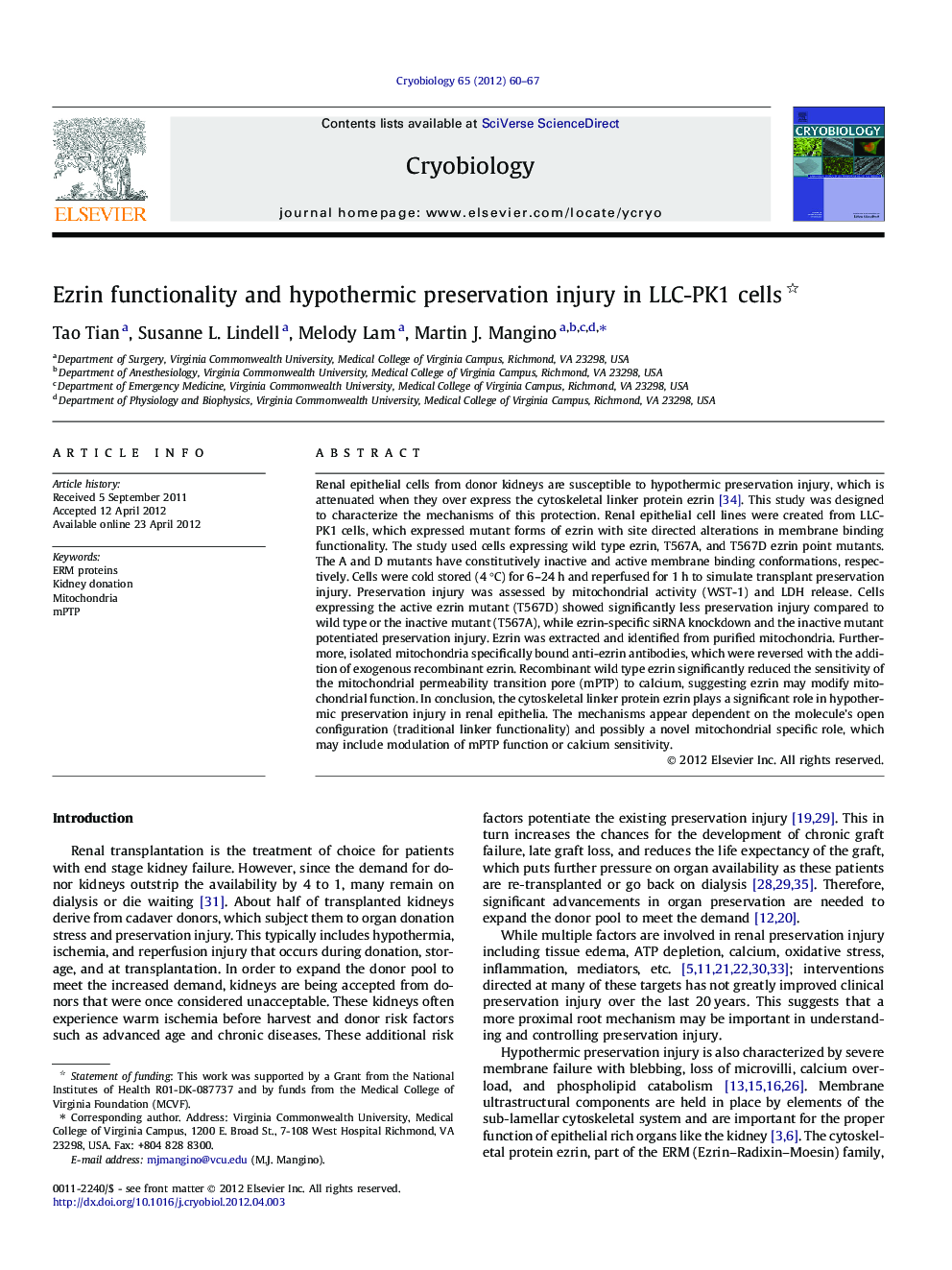| Article ID | Journal | Published Year | Pages | File Type |
|---|---|---|---|---|
| 2168490 | Cryobiology | 2012 | 8 Pages |
Renal epithelial cells from donor kidneys are susceptible to hypothermic preservation injury, which is attenuated when they over express the cytoskeletal linker protein ezrin [34]. This study was designed to characterize the mechanisms of this protection. Renal epithelial cell lines were created from LLC-PK1 cells, which expressed mutant forms of ezrin with site directed alterations in membrane binding functionality. The study used cells expressing wild type ezrin, T567A, and T567D ezrin point mutants. The A and D mutants have constitutively inactive and active membrane binding conformations, respectively. Cells were cold stored (4 °C) for 6–24 h and reperfused for 1 h to simulate transplant preservation injury. Preservation injury was assessed by mitochondrial activity (WST-1) and LDH release. Cells expressing the active ezrin mutant (T567D) showed significantly less preservation injury compared to wild type or the inactive mutant (T567A), while ezrin-specific siRNA knockdown and the inactive mutant potentiated preservation injury. Ezrin was extracted and identified from purified mitochondria. Furthermore, isolated mitochondria specifically bound anti-ezrin antibodies, which were reversed with the addition of exogenous recombinant ezrin. Recombinant wild type ezrin significantly reduced the sensitivity of the mitochondrial permeability transition pore (mPTP) to calcium, suggesting ezrin may modify mitochondrial function. In conclusion, the cytoskeletal linker protein ezrin plays a significant role in hypothermic preservation injury in renal epithelia. The mechanisms appear dependent on the molecule’s open configuration (traditional linker functionality) and possibly a novel mitochondrial specific role, which may include modulation of mPTP function or calcium sensitivity.
